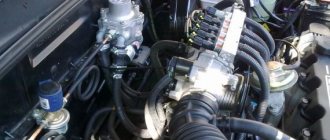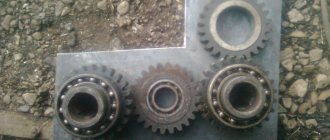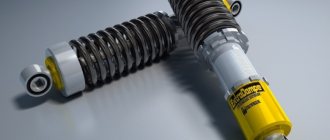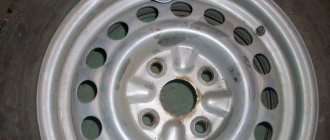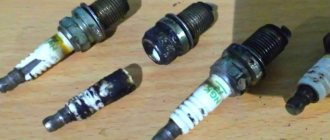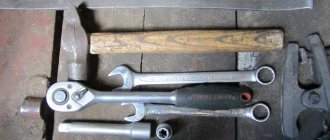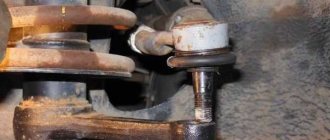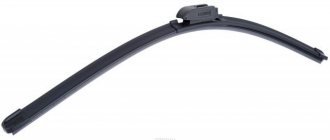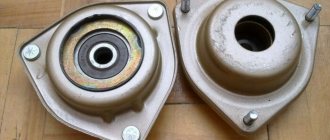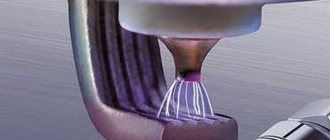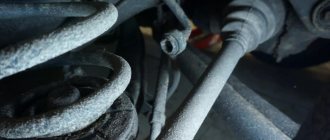Reading time: 5 minute(s)
Drivers are constantly debating which struts are better: gas or oil? However, the problem of assessing these components is complex, and it does depend heavily on the specific situation. Sometimes classic oil shock absorbers are the best choice, while in other cases you can't resist gas shock absorbers. They differ in design, parameters and influence on driving comfort. It's worth getting a little closer to these differences and explaining how to make the right choice.
The use of shock absorbers in a car
Their main task is to maintain the operation of the elastic suspension, that is, to reduce vibrations resulting from unevenness as much as possible. If it were not for the shock absorber, the car would be installed only on springs, which did not dampen vibration.
Driving such a car would be like cruising on a boat. Thanks to damping elements such as shock absorbers, the car will deviate from its natural position due to uneven roads, but will automatically return to its previous position. Without shock absorbers, the recovery time would be obviously longer.
However, comfort is not the only goal of the entire suspension system. Moreover, this is just a derivative of his actions, and not a priority. The main task is to ensure contact of the wheel with the surface, and therefore safety. If the system did not have an element responsible for damping, the car’s wheels could bounce off bumps. You don't need to explain that this is a very undesirable and dangerous effect.
This causes not only a temporary loss of control over the car, but also incorrect operation of electronic systems such as ABS. This system "releases" braking force when the wheel loses contact with the surface. The result may be that ABS will not brake the vehicle on rough roads. In this situation, it is better not to have any brake support system, because this system requires constant contact of the wheels with the ground to perform its functions.
What's more, faulty shock absorbers mean that suspension and braking components wear out faster and your braking distance increases. They also cause the headlights to be in the wrong position.
Gas shock absorber
Many people believe that this is a shock absorber with only gas pumped inside it. This is not entirely true, since the moving parts of the shock absorber, such as the rod, check valves, and piston, must be lubricated, so there is always oil . It’s just that in addition to a chamber with oil, this type of rack also has a chamber with compressed gas. Gas shock absorbers are divided, in turn, into single-pipe or double-pipe, depending on the type of internal device.
Gas shock absorber
The principle of operation of shock absorbers
The damping system is subject to compression and expansion during operation. In professional language, these processes are called compression and reflection.
The simplest examples are oil shock absorbers, in which the phenomenon of reducing vibrations by reducing friction occurs during their movement. This is why oil is used in shock absorbers. Its movement, caused by the displacement of the piston, dissipates energy, providing apparent resistance, reducing vibrations.
This principle is applied using two types of shock absorbers - monotube and twin-tube. Both types differ from each other in the location of the compensation chamber. The design of a monotube shock absorber is much simpler and consists of the following elements: a piston rod with a permanently attached piston in which there are two valves, a piston that separates the working chamber from the compensation chamber, and, of course, the housing.
This design does not have an expansion tank, because the working part of the chamber has a variable volume. The lower part of a monotube shock absorber is a gas-filled compensation chamber. The volume in both chambers is always constant, while during operation the working part “occupies” some volume from the compensation part. Without this maneuver, the movement of the piston would be impossible.
The twin-tube shock absorber is already more complex, but its operation is also based on the idea described above. Its design still contains a piston rod with an attached piston with valves, an inner housing, and a working and compensation chamber. However, instead of a movable piston separating the two baffles, there is a permanently attached lower baffle, which, like the piston, contains valves.
In a single-pipe design, the compensation chamber is located under the working chamber, but here one part is inside the other. The compensation chamber surrounds the working chamber and contains oil instead of compressed gas. Since one part is located in another, it is not difficult to find a disadvantage of this solution. This is of course the cooling of the working chamber, it is worse here.
Which option is better and for which situation?
In order not to be unfounded, we will consider each type in detail.
Are you experiencing problems with your air conditioner? The air conditioning compressor pulley bearing may need to be replaced.
How to change rubber bands on frameless wipers - see here.
Oil shock absorbers
Oil shock absorbers appeared earlier than others. Photo: ffocus-help.ru
The operating principle is quite simple. A rod with a piston moves in the working cylinder, which is filled with special oil. The piston has clearly calibrated valves. With their help, oil is distilled from one part of the shock absorber to another. Moreover, the valves that open to reach out have a smaller diameter than the others. Due to this, the speed of liquid transfer is limited and a large energy consumption occurs.
Main elements of an oil shock absorber:
- Working cylinder;
- Stock;
- Piston;
- valves;
- Separating piston;
- Oil.
This is interesting: Why cars burn more gasoline than the manufacturer originally stated
Oil shock absorbers have a large number of advantages:
- High strength and reliability;
- Excellent characteristics;
- Ease of manufacture;
- Possibility of repair;
- Low cost.
With very strong differences in operating conditions, the stiffness of the shock absorber changes greatly. This is due to changes in oil viscosity. The higher the temperature, the lower the oil viscosity, and breakdowns and oil leaks are possible. And vice versa. In winter, the oil viscosity is high and the shock absorbers do not press through potholes. All this affects ride comfort and handling quality.
Gas shock absorbers for cars
Gas shock absorbers are preferred by most drivers today. Photo: kyb-shop.ru
It is this type of shock absorbers that car owners love most. Although they are called “gas”, they also contain oil. The only difference is that it does not come into contact with gas.
- shock absorber body;
- stock;
- a piston that is connected to a rod and equipped with two valves - forward and reverse;
- a float piston that separates oil from gas.
In this type of shock absorbers there is no working chamber; its role is played by the body. The shock absorber is divided by a piston into two chambers. One of them, namely the lower one, is filled with the same nitrogen, but under high pressure, and the upper part is filled with special oil. The piston and rod move here. The power stroke and rebound valves are located directly on the piston.
The range allows you to choose shock absorbers according to your financial capabilities. Photo: lada34.ru
- high reliability;
- increased service life compared to oil shock absorbers;
- improved characteristics;
- adjustable hardness.
The second disadvantage is that when the body is deformed, the piston becomes pinched, which leads to breakage, but such cases do not occur in practice.
Gas-oil shock absorbers
First, let's figure out what a gas-oil shock absorber is. In fact, there are no gas-oil shock absorbers. It’s just that sometimes some craftsmen call gas ones as gas-oil ones. This is due to the presence of oil in the gas shock absorber. There is no way to do without oil at all, since there will be a lot of friction, and, consequently, wear. Gas fills the space under the piston at high pressure, and the higher this pressure, the more severe the operation of the automobile damping device will be.
Differences and features of oil or gas shock absorbers
Oil and gas shock absorbers differ mainly in their design. If you are not sure what type of item your vehicle has, remove it from the vehicle and hold it in the position it is in the vehicle. Now simply compress the shock absorber and release it, and then watch how the piston rod behaves.
In the case of a gas shock absorber, we are dealing with a monotube design in which there is no compensation tank. At the bottom of the shock absorber there is compressed gas, which is separated from the oil by a piston. When the gas shock absorber is compressed, the pressure increases, which is manifested in the downward movement of the piston. The piston rod slides into the working chamber.
After releasing the shock absorber, a so-called rebound occurs, in which the piston moves upward. As a result, the oil pressure above the piston increases, and the fluid again passes through the valves and channels.
In the case of an oil shock absorber we are dealing with a two-tube design. When the shock absorber compresses, oil flows into the space above the piston, which means there is a limited amount of space in the cylinder available for fluid. Therefore, it is pressed into the expansion tank.
During rebound, the piston rod is pulled out of the cylinder and the oil pressure above the piston increases. The fluid accumulated in the expansion tank flows to balance the volume of the piston rod, which slides out of the working cylinder.
Therefore, the main difference between oil shock absorbers and oil and gas (gas) shock absorbers is the compensation chamber. In the first case, it is open, and in the second type, the muffler system is closed.
However, if we still do not know how to recognize gas and oil shock absorbers, we must go to a car workshop where a specialist can easily indicate which model of the element is in our car. This way, you will definitely avoid mishaps with the wrong shock absorber selection.
How are shock absorbers different?
A gas shock absorber does not have air chambers, they contain gas. The key difference is the variable rigidity during compression (it increases), which is completely unusual for a liquid medium. However, one hundred percent gas shock absorbers simply do not exist; they have a mixed medium - oil, gas, hence the unofficial name gas-oil.
Oil vibration damping devices are more rigid, since there is only one working medium in the shock absorber - oil. And since liquids are very poorly compressible, the corresponding travel characteristics are obtained. Gas shock absorbers have a double working medium, and it is easily compressible. Gas devices are more adaptable to changing road conditions. The gas-oil shock absorber absorbs small irregularities very gently, but when the rod movements become significant, the device increases rigidity. This (wide operating range) is one of the main advantages of gas shock absorbers. By and large, everything depends on the correct setting of the valves, selection of the volume of the chambers, and other design features.
This is interesting: Drawings of the brackets for the additional rear shock absorber of the VAZ 2106
Which shock absorbers are better
Which shock absorbers are better, oil or gas?
When choosing a gas shock absorber, you should pay attention, first of all, to its brand. Available on the market are original and therefore expensive spare parts, their cheaper substitutes, as well as low-quality fakes, which are characterized by low strength and resistance to damage and difficult driving conditions.
We don't have to buy the most expensive products to enjoy the quality we need. All we have to do is select those brands that have the greatest recognition among drivers and choose the most attractive option from them.
To answer the question of which strut is better, gas or oil, you need to know the advantages and disadvantages of these products.
Advantages
The advantage of oil shock absorbers, of course, is their trouble-free operation, which they owe to their simple design. It is extremely unlikely that the shock absorption will suddenly stop working due to some damage. Unfortunately, however, there is a risk that the oil damper will gradually lose effectiveness due to the oil foaming quite quickly. This may occur if the vehicle frequently travels at high speeds on uneven surfaces.
A gas-filled (usually nitrogen) shock absorber strengthens the chassis, increasing tire grip, which improves vehicle handling and allows higher speeds. It's no surprise that these shock absorbers are often used in sports cars. On the other hand, complex design increases the failure rate of shock absorbers. However, it should be remembered that due to the nitrogen separated from the oil, foaming does not occur, which increases the service life of the shock absorber.
Flaws
Oil shock absorber.
- Heavy weight;
- slow response to inequalities;
- less grip on the wheel;
- less damping force;
- risk of changes in oil parameters due to high ambient temperatures.
Gas shock absorber.
- Higher price;
- complex design;
- vulnerability;
- less comfortable ride;
It is difficult to unequivocally answer the question which struts are better: gas or oil or gas-oil.
Oil shock absorbers are inferior to the technological competition (they are simply older), but they have two main advantages: they are more convenient and cheaper at the same time. Thanks to oil shock absorbers, the suspension becomes softer and more comfortable. Because of this, drivers who prefer a quieter and more comfortable ride appreciate this type of shock absorber. Unfortunately, during heavy driving on uneven surfaces, the oil in the shock absorber can foam, which gradually reduces its effectiveness at damping vibrations.
Many users also have problems choosing a shock absorber manufacturer. As a rule, brands such as KYB (Kayaba), Monroe, Sachs, Bilstein, Delphi enjoy the greatest recognition among drivers and professionals. KYB aftermarket shock absorbers are manufactured in the same factories and use the same technology and quality control systems as factory-installed shock absorbers.
The shock absorbers feature high performance valve assemblies designed to compensate for wear of other chassis components once installed in the vehicle to restore driving comfort and safety. Cheaper choices when renovation budgets are limited may include Delphi, Kamoka, Denckermann and MaxGear.
TOP 7 best shock absorber manufacturing companies
Among the many different manufacturers of suspension parts, 7 of the best should be noted.
| Place in the ranking | Brand | Manufacturer country | Price in rub. |
| 7 | Koni | Netherlands | 6100 |
| 6 | Tokiko | Japan | 4800 |
| 5 | Bilstein | Germany | 3700 |
| 4 | Monroe | USA | 5400 |
| 3 | KYB | Japan | 4700 |
| 2 | Sachs | Germany | 4200 |
| 1 | Boge | Germany | 4500 |
Koni
The Dutch company produces about 2,500 different suspension elements for a huge number of makes and models of cars. A special feature of Koni parts is their marking in the form of a color scheme on the spare parts - for what loads and what kind of cars their products are suitable. Most Koni racks are adjustable and will fit almost any vehicle.
Advantages and disadvantages
good quality;
versatility.
unreasonably high price;
Not available for all cars.
TOKICO
The quality of spare parts is achieved through increased control in just two factories in Japan. Tokico does not use double global standards for its requirements for products manufactured for the secondary and conveyor markets. The quality of Tokiko is superior to its American and European counterparts. But users bypass them.
Advantages and disadvantages
best quality among all;
affordable price.
a large number of fakes;
the original is found more often on the assembly line during car assembly, and not on the spare parts market.
Bilstein
The German company has been producing suspension parts since the beginning of the last century. But in 1954, Bilstein managed to create a unit with a single-pipe design. A unique engineering solution made it possible to maintain high vehicle controllability. Bilstein spare parts have an average price and appropriate quality.
Advantages and disadvantages
affordable price;
good handling.
medium quality;
Not available for all cars.
MONROE
Monroe is the oldest manufacturer of suspension components in the world. The American company supplies the global aftermarket with its products. Monroe shock absorbers became famous throughout the world when struts with electronically controlled parameters were introduced. Despite the high cost, the idea was liked by everyone, and not only in the USA.
Advantages and disadvantages
good quality;
factories all over the world.
high price.
KYB
There are a lot of fans of the famous “Kayaba”. These are some of the best Japanese shock absorbers, which are guaranteed even in Russia. KYB offers customers a variety of struts: the same car can have more comfortable parts for a relaxed ride or advanced, hard struts for drifting or other road tests. Almost all Japanese and Chinese cars are equipped with suspension parts from Kayaba.
Advantages and disadvantages
excellent quality of spare parts;
suitable for sporty driving;
versatility.
tough, compared to analogues;
fakes are common.
Sachs
The company is part of the same group as Boge. The quality is not inferior to its competitors. The company's spare parts combine the balanced qualities of comfortable, sports and even off-road racks. The company produces shock absorbers for domestic cars of the VAZ, UAZ, GAZ brands, and sports versions of the struts are even installed on Formula 1 cars.
Advantages and disadvantages
applicability to domestic cars.
high price.
Boge
The company produces shock absorbers for Volvo, Mercedes-Benz, Renault and VAG group cars. A huge assortment - almost 4000 varieties of racks, suitable for most cars in the world. The best thing about such variety is the affordable price of spare parts. But the quality suffers a little.
Advantages and disadvantages
premium spare parts available;
Wide range for any car.
a lot of fakes.
Price
Many users decide for themselves which struts are better, gas or oil, based on considerations of financial gain. Prices for oil shock absorbers start from 900 rubles, and gas shock absorbers from 2000 rubles. But branded products cost several times more. And even in the case of cars of popular brands.
Petr Alekseev
Regular author of articles for the magazine rating cars.
What to consider when choosing
To choose the right car shock absorbers, you first need to answer the question: “What road surface do you drive on most often?” After this, you can safely move on to a specific choice.
An oil shock absorber has its advantages; it handles unevenness most gently, but, unfortunately, has a limited resource. Gas, on the contrary, is more rigid, but fortunately, progress does not stand still and relatively long ago it became possible to regulate the rigidity of gas shock absorbers. This is done by adjusting the oil pressure.
Don't forget that you are paying for quality and comfort. Gas shock absorbers have an extended service life and, according to users, can last many times longer than oil shock absorbers. This means you will save on your next trip to the car service center. You will learn about other advantages of different types of shock absorbers from this video:
Thus, we have understood the types and features of automobile shock absorbers. We also came to the conclusion that the choice should be made on gas shock absorbers, and there are many reasons for this. The main one is the asphalt surface of most roads. And the higher the stiffness of the shock absorbers, the better the car feels at high speeds.
